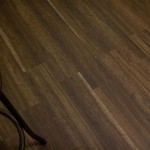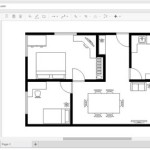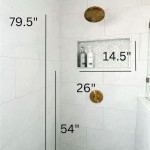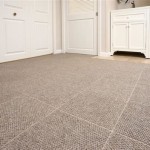Floor To Ceiling Kitchen Pantry Cabinet: Maximizing Space and Organization
The floor to ceiling kitchen pantry cabinet stands as a powerful solution for optimizing storage and organization within a space often challenged by clutter. These cabinets, extending vertically from floor to ceiling, offer a substantial increase in storage capacity compared to traditional pantry configurations. Their design capitalizes on unused vertical space, transforming previously overlooked areas into functional storage zones. Understanding the benefits, design considerations, and installation nuances of floor to ceiling kitchen pantry cabinets is crucial for homeowners seeking to enhance the efficiency and aesthetic appeal of their kitchens.
Floor to ceiling pantry cabinets are not merely storage units; they represent a strategic investment in kitchen functionality. They consolidate food items, kitchen appliances, and various household supplies, leading to a more organized and accessible kitchen environment. The visual impact of a well-designed floor to ceiling pantry also contributes significantly to the overall aesthetic of the kitchen.
Key Benefits of Floor To Ceiling Pantry Cabinets
Floor to ceiling pantry cabinets offer numerous advantages over smaller, more traditional pantry options. These benefits span enhanced storage capacity, improved organization, and a significant contribution to the kitchen's overall aesthetic appeal.
A primary advantage lies in the substantial increase in storage space. By utilizing the full vertical height of the wall, these cabinets provide significantly more shelving and storage volume compared to standard cabinets. This additional space allows homeowners to store a larger quantity of food, appliances, and other kitchen necessities, reducing clutter and improving accessibility. This is particularly beneficial for homes with limited kitchen space where maximizing storage is a priority.
Furthermore, floor to ceiling pantry cabinets promote better organization. With customizable shelving options, homeowners can tailor the interior layout to suit their specific storage needs. Adjustable shelves, pull-out drawers, and specialized organizers facilitate the categorization and arrangement of items, making it easier to locate and retrieve what is needed. This organized approach minimizes food waste by ensuring that items are visible and easily accessible before they expire.
Beyond functionality, floor to ceiling cabinets also enhance the aesthetic appeal of the kitchen. Their sleek, continuous design creates a visually cohesive look, contributing to a modern and uncluttered appearance. Available in a variety of styles, finishes, and materials, these cabinets can be seamlessly integrated into any kitchen design, complementing existing cabinetry and décor. The increased visual harmony transforms the kitchen into a more inviting and aesthetically pleasing space.
Design Considerations for Floor To Ceiling Pantry Cabinets
Planning and designing a floor to ceiling pantry cabinet requires careful consideration of several factors to ensure optimal functionality and aesthetic integration. Key aspects include space assessment, material selection, interior configuration, and stylistic alignment with the existing kitchen design.
Before embarking on a pantry cabinet project, a thorough assessment of the available space is essential. This involves measuring the height, width, and depth of the designated area to determine the maximum dimensions of the cabinet. Consideration should be given to any obstructions, such as pipes, electrical outlets, or architectural features, that may impact the cabinet's placement or design. Accurate measurements are crucial for ensuring a proper fit and avoiding costly modifications later on.
The selection of materials for the pantry cabinet is another critical design consideration. Common materials include wood, laminate, and metal. Wood offers a classic and durable option, with various species and finishes available to match the kitchen's overall theme. Laminate provides a more budget-friendly alternative, offering a wide range of colors and patterns. Metal cabinets are known for their durability and modern aesthetic, often used in contemporary kitchen designs. The choice of material should reflect the homeowner's budget, aesthetic preferences, and the desired level of durability.
The interior configuration of the pantry cabinet is crucial for maximizing storage and organization. Adjustable shelves allow for flexible storage of items of varying sizes. Pull-out drawers provide easy access to items stored at the back of the cabinet, while specialized organizers, such as spice racks and can organizers, help to maintain order and prevent clutter. The interior layout should be customized to suit the homeowner's specific storage needs and preferences. Consider the types of items to be stored and design the interior accordingly for optimal efficiency.
Finally, the style and finish of the pantry cabinet should align with the existing kitchen design. Whether the kitchen features a traditional, modern, or transitional style, the pantry cabinet should seamlessly integrate into the overall aesthetic. Matching the cabinet's color, door style, and hardware to the existing cabinetry will create a cohesive and visually appealing look. Consider the details, such as decorative molding or glass door inserts, to enhance the cabinet's visual impact and complement the kitchen's design elements.
Installation and Maintenance of Floor To Ceiling Pantry Cabinets
Proper installation and regular maintenance are essential for ensuring the longevity and functionality of a floor to ceiling pantry cabinet. The installation process typically involves assembling the cabinet, securing it to the wall, and adjusting the shelves and hardware. Maintenance includes regular cleaning to prevent the buildup of dust and grime, as well as periodic inspections to identify and address any potential issues.
The installation of a floor to ceiling pantry cabinet is a multi-step process that requires careful attention to detail. The first step is to assemble the cabinet according to the manufacturer's instructions. This typically involves attaching the sides, top, bottom, and back panels using screws or other fasteners. Once the cabinet is assembled, it should be carefully positioned in the designated space, ensuring that it is level and plumb. Shim may be needed to adjust the cabinet properly. The cabinet is then secured to the wall using screws or bolts, ensuring that it is firmly anchored to the studs for stability.
Proper anchoring is crucial for the safety and stability of the cabinet, especially floor to ceiling designs. Failing to securely anchor the cabinet to wall studs could lead to tipping or collapse, creating a safety hazard. Once the cabinet is secured, the shelves, drawers, and other interior components can be installed. The shelves should be adjusted to the desired heights, and the drawers should be tested to ensure smooth operation. Finally, the hardware, such as knobs or pulls, can be attached to complete the installation process.
Regular maintenance is essential for preserving the appearance and functionality of the floor to ceiling pantry cabinet. This includes wiping down the exterior surfaces with a damp cloth to remove dust and grime. For stubborn stains or spills, a mild cleaning solution can be used. Avoid using harsh chemicals or abrasive cleaners, as these can damage the cabinet's finish. The interior of the cabinet should also be cleaned regularly to prevent the buildup of food particles or other debris. Periodically check the shelves and drawers for any signs of wear or damage. Tighten any loose screws or hinges, and replace any damaged components as needed. Proper maintenance will help to extend the life of the pantry cabinet and keep it looking its best.
By understanding the benefits, design considerations, and installation and maintenance procedures associated with floor to ceiling kitchen pantry cabinets, homeowners can make informed decisions to create functional and visually appealing storage solutions that optimize their kitchen space.

Floor To Ceiling Pull Out Pantry Cabinet Transitional Kitchen

Floor To Ceiling Pantry Cabinets Design Ideas

Floor To Ceiling Pantry Window Design Ideas

How To Use Floor Ceiling Kitchen Cabinets Their Full Potential

Floor To Ceiling Pantry Cabinets Design Ideas

10 Kitchen Pantry Ideas For Your Home Town Country Living

Pantry Cabinet Ideas Smart Storage Solutions For An Organized Kitchen

Floor To Ceiling Utility Cabinets

Built In Pantry Floor To Ceiling Cabinets Eastchester Ny

6 Benefits Of A Floor To Ceiling Pantry







